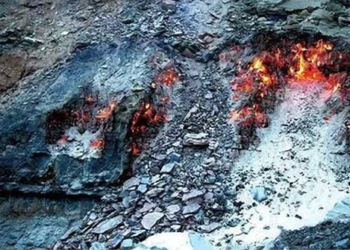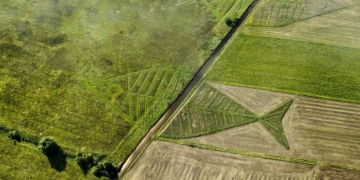With rudimentary techniques, ancient builders around the world created structures that have survived for centuries, such as the Great Wall of China and the Pantheon in Italy…
Learning from the Ancients
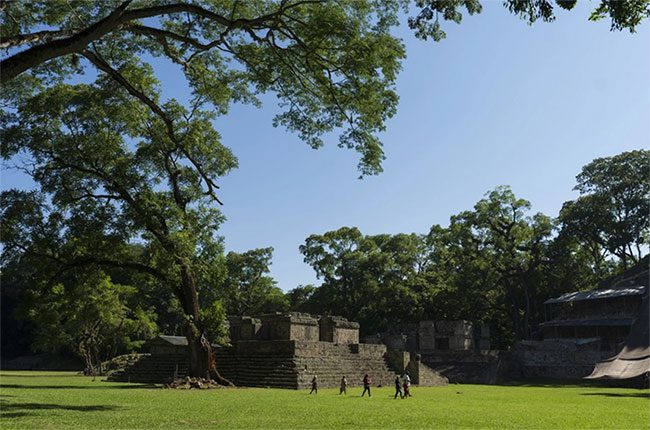
An ancient Maya structure over 1,000 years old in Honduras. (Photo: AP).
On October 3, the Associated Press (AP) reported that an increasing number of scientists are studying ancient materials in hopes of discovering the secrets that enable them to last for thousands of years. They have carved blocks, examined historical texts, and tested simulation formulas… This research has revealed an astonishing list of materials used by ancient peoples in construction, such as tree bark, volcanic ash, rice, beer, and even urine.
These materials are key to some impressive properties, such as increased strength over time and the ability to “heal” cracks. Mimicking these characteristics could have a real impact on modern constructions. While modern concrete is strong enough to support massive skyscrapers and heavy infrastructure, it cannot compete with the durability of ancient materials.
With the increasing threat of climate change, building more sustainable structures is urgent. A recent United Nations report estimates that the construction environment accounts for more than one-third of global CO2 emissions, with cement production alone contributing over 7% of that total.
Researcher Carlos Rodriguez-Navarro from the University of Granada (Spain) explains: “If we can improve the properties of materials using traditional formulas from the Maya or ancient Chinese, we could produce construction materials in a much more sustainable way.”
Is ancient Roman concrete better than modern concrete?
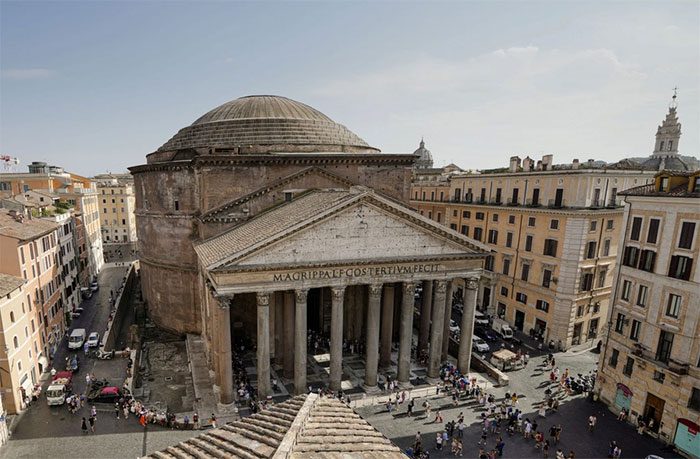
The Pantheon in Rome, Italy. (Photo: AP).
Since around 200 BC, architects of the Roman Empire constructed impressive concrete structures that have stood the test of time—from the soaring dome of the Pantheon to the robust aqueduct systems that are still functional today.
Archaeologist John Oleson from the University of Victoria (Canada) notes that even in harbors where seawater has “pounded” architectural structures for long periods, the concrete remains fundamentally similar to how it was 2,000 years ago.
Most modern concrete begins with Portland cement, created by heating limestone and clay to extremely high temperatures and then grinding them. Portland cement is mixed with water to create a chemical reaction. Then, materials like stone and gravel are added, and the cement slurry binds them into a solid block of concrete.
According to records from ancient architects like Vitruvius, the Roman construction process was similar. Ancient builders mixed materials like burnt limestone and volcanic sand with water and gravel, creating chemical reactions to bind everything together.
Now, scientists believe they have uncovered the answer to why some types of Roman concrete can help structures stand for thousands of years: This ancient material possesses an unusual self-healing capability.
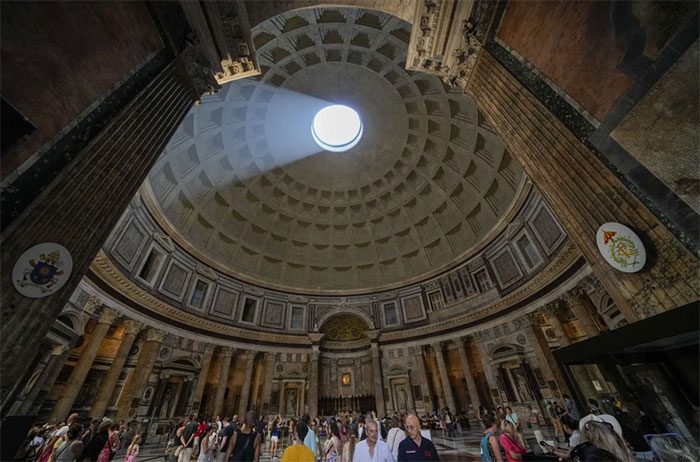
The dome of the Pantheon in Rome, Italy. (Photo: AP).
While it is not yet definitively proven, scientists are beginning to find clues. In a study published earlier this year, engineer Admir Masic at the Massachusetts Institute of Technology (USA) suggested that the strength comes from lumps of lime dispersed throughout the Roman material instead of being evenly mixed. Researchers previously thought these lumps indicated a lack of skill in mixing materials by the Romans.
Instead, after analyzing concrete samples from Privernum—a city in the suburbs of Rome—scientists discovered that these lime lumps could enhance the material’s self-repair capability. Masic explains: “When cracks form, water can seep into the concrete. That water activates the leftover lime lumps, producing new chemical reactions that can fill the damaged areas.”
Marie Jackson, a geologist at the University of Utah (USA), offers a different perspective. Her research has found that the key may lie in volcanic materials. Romans often collected volcanic rock left over from eruptions to mix into their concrete. According to Jackson, this natural material changes over time, allowing it to seal formed cracks. She praises the material’s ability to adapt over time as miraculous, stating: “The concrete is designed so well that it can maintain itself.”
Using Water from Plants
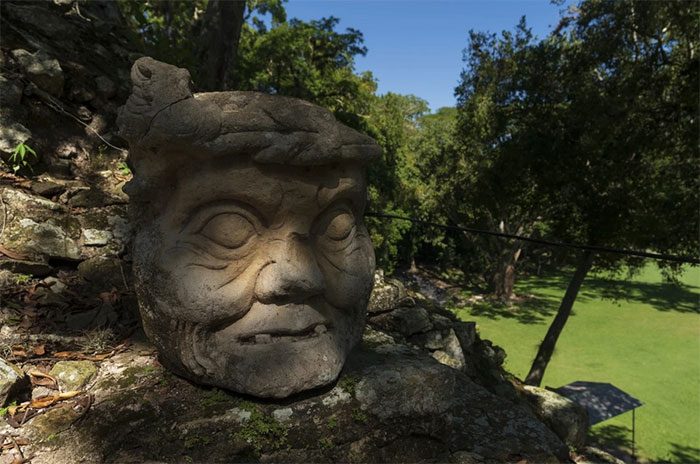
A statue at Copan, an ancient Maya site in Honduras. (Photo: AP).
At Copan, an ancient Maya site in Honduras, intricate lime sculptures and temples have remained intact after over 1,000 years of exposure to a humid environment. According to a study published earlier this year, the secret to the longevity of these structures may lie in the trees. Researchers encountered local masons in Honduras, who share a “living connection” with the ancient Maya builders.
These masons suggested using extracts from local chukum and jiote trees in their lime mixtures. When researchers tested the formula by gathering tree bark, adding lime lumps to water, and incorporating “juice” from the chukum and jiote trees into the material, they found that the resulting plaster exhibited exceptional durability against physical and chemical impacts. When scientists zoomed in, they discovered some organic compounds from the tree juice had integrated into the molecular structure of the plaster. In this way, the Maya plaster could mimic robust natural structures like seashells and sea urchin spines.
Numerous studies have found natural materials in ancient constructions: extracts from fruits, milk, curds, beer, and even feces and urine. The mortar binding some of the most famous structures in China—including the Great Wall and the Forbidden City—contains traces of starch from glutinous rice.
Fortunate or Skilled?
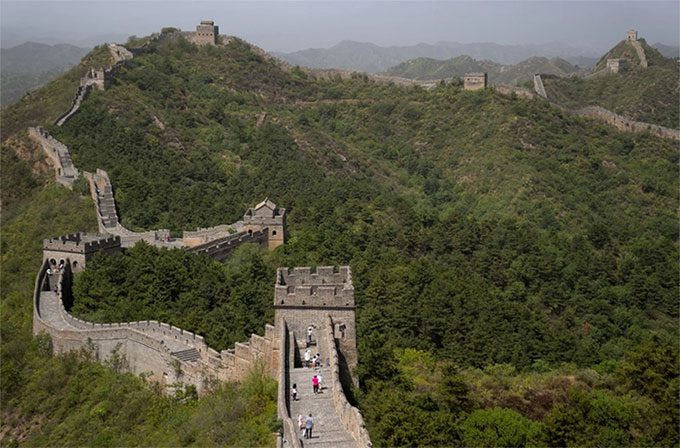
The Great Wall of China. (Photo: AP).
Scientist Cecilia Pesce at the University of Sheffield (UK) notes that some ancient builders may have simply been lucky. They would mix anything into their mixtures as long as it was cheap and available, and materials that were ineffective have long since crumbled. Pesce states: “They threw all sorts of things into their construction. And now, we only have the surviving structures. So, it’s like a natural selection process.”
However, some materials appear to have been used purposefully. Professor Thirumalini Selvaraj at Vellore Institute of Technology (India) explains that Indian builders crafted local material mixtures to create different properties.
According to Selvaraj’s research, in the humid regions of India, builders used local herbs to help structures resist moisture. Along the coast, they added jaggery, an unrefined sugar, to protect constructions from salt damage. And in areas prone to higher earthquakes, they employed “lightweight bricks” made from rice husks. Selvaraj states: “They understood their region, recognized the land and climatic conditions. Therefore, they crafted materials based on that.”
Modern builders cannot merely replicate ancient formulas. Oleson states: “While Roman concrete has a very long lifespan, it cannot bear heavy loads. You cannot build a modern skyscraper with Roman concrete. It would collapse by the third floor.” Instead, researchers are striving to utilize some special characteristics of ancient materials and incorporate them into modern mixtures.








































